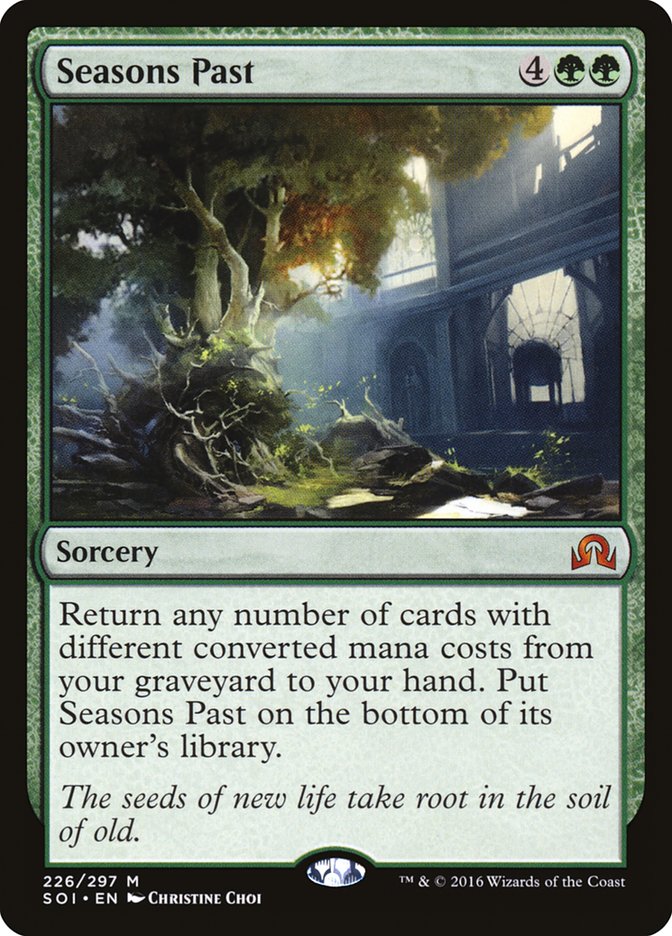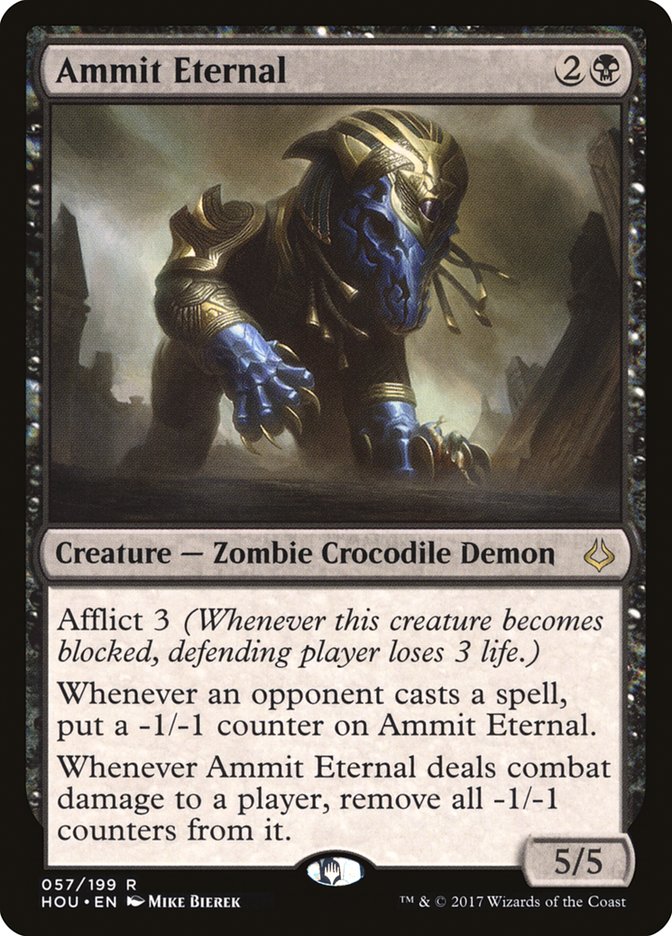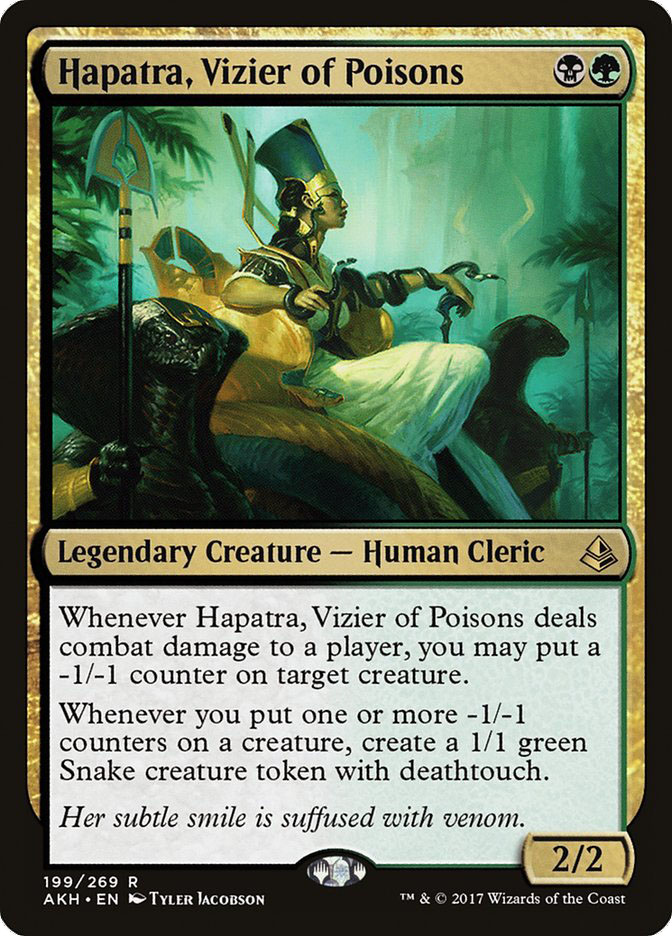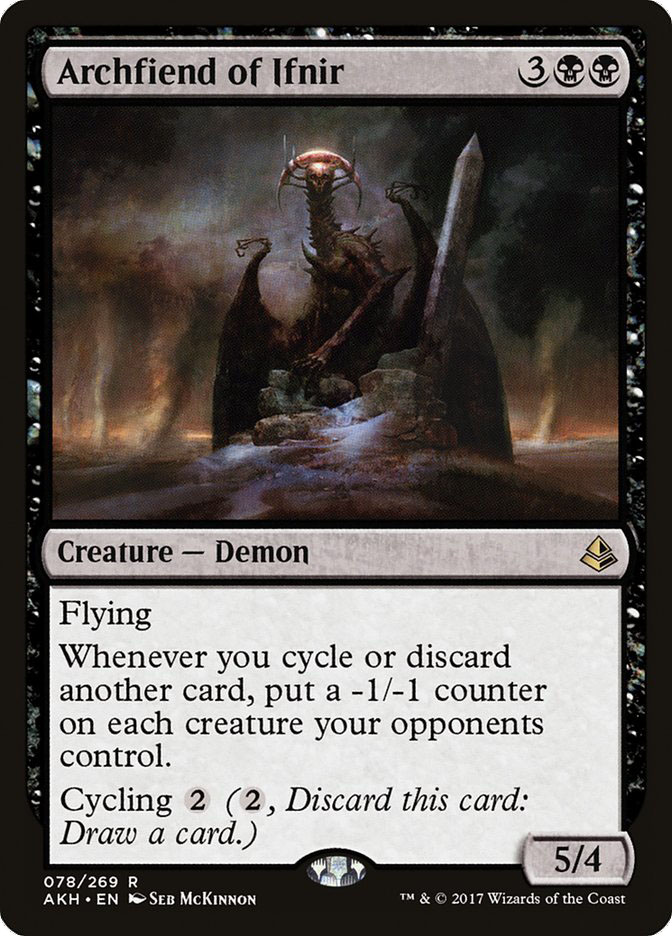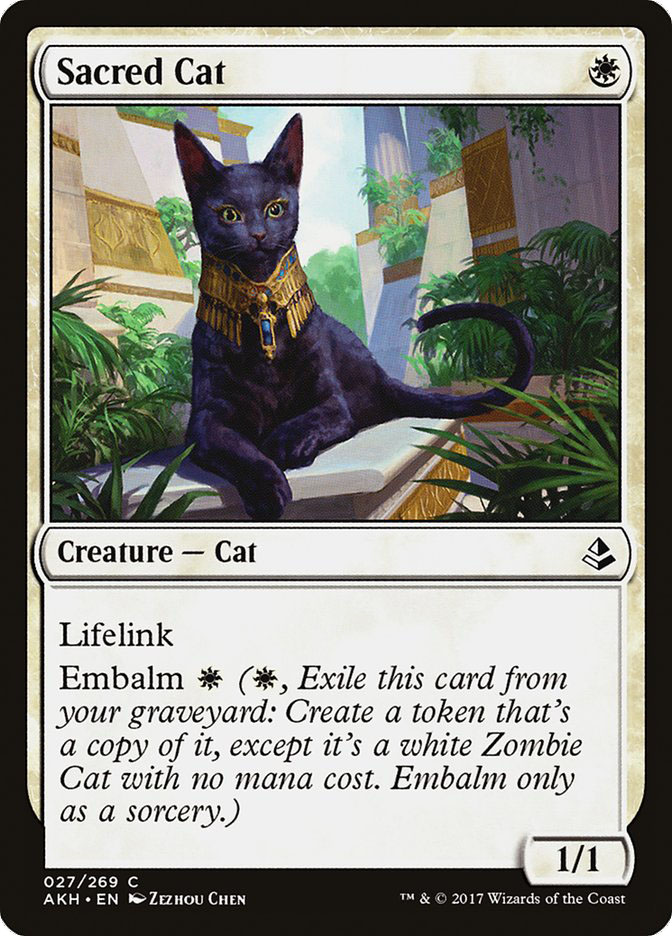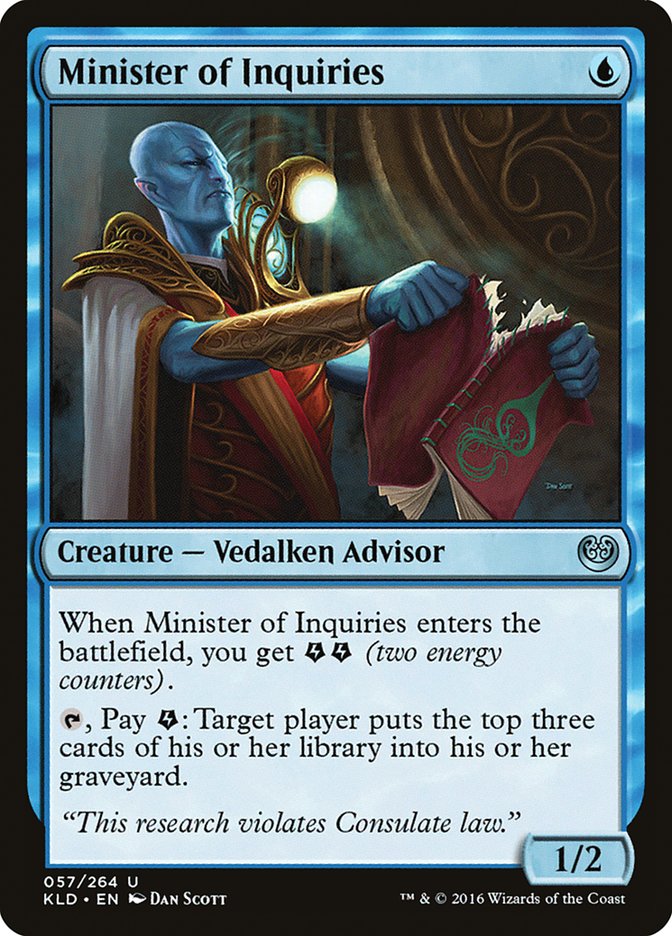At the end of the day, none of the decks I built were good enough to play in the recent Pro Tour over Ramunap Red, but I did have a lot of fun trying a bunch of sweet ideas leading up to the Pro Tour, and today I want to showcase some of the things that are possible in this format. Some of these ideas might need a little work and the right metagame, while others might only be appropriate for casual settings, but with a Standard this big, a lot of things are possible, and I’d hate for people to think haste creatures or Zombies are the only options.
One of the first decks I built was a Seasons Past deck. For those of you who remember my The Great Aurora deck I played at the Magic Online Championships and other events, this is an attempt to recapture some of what was going on with that deck.
Seasons Past fell out of play in Standard when Magic Origins rotated out of Standard and we lost Dark Petition, destroying the Seasons Past loop. As it happens, Razaketh’s Rite is theoretically a viable replacement for Dark Petition. It’s more expensive than casting Dark Petition with Spell Mastery, but cycling it is great, since it can help with delirium and it can wait in your graveyard until you draw Seasons Past and then allow your late-game engine to kick into full gear.
Explosive Vegetation and Nissa’s Pilgrimage were similarly important to that deck, but Hour of Promise is an interesting replacement. It doesn’t accelerate you as early, but the blockers can help stabilize when you do cast it, and it still gets you to an end-game where you have a lot of mana to work with.
Creatures (12)
- 4 Sylvan Advocate
- 4 Tireless Tracker
- 1 Ulvenwald Hydra
- 1 Ishkanah, Grafwidow
- 1 Gonti, Lord of Luxury
- 1 Walking Ballista
Planeswalkers (2)
Lands (27)
Spells (19)

Unfortunately, this deck is considerably too slow for Standard as it exists now. You could try something like Jaddi Offshoot to try to shore up the Ramunap Red matchup (though it’s likely worse than Life Goes On), but the real problem is actually Zombies, and this is where the other rotation from Magic Origins, Languish, would really be necessary. I promise you, Bontu’s Last Reckoning doesn’t cut it.
I tried a few other clunky midrange decks leading up to this event, and I’m honestly not sure what drew me to try them, since they’re not the kind of decks I like to play. This one was based on the success of the B/R Control deck on Magic Online. I liked a lot of what it was doing, but I really wanted Pulse of Murasa with Goblin Dark-Dwellers to be able to gain life, and I thought that it might not make the deck too clunky to add green, since I’d get Attune with Aether, which plays well with the energy theme anyway, and Tireless Tracker is a much better card advantage engine than Live Fast.
Creatures (12)
- 1 Kalitas, Traitor of Ghet
- 2 Goblin Dark-Dwellers
- 3 Tireless Tracker
- 1 Ishkanah, Grafwidow
- 4 Glint-Sleeve Siphoner
- 1 Glorybringer
Planeswalkers (5)
Lands (21)
Spells (22)

Ultimately, this deck still has more tapped lands than B/R and also needs to spend mana casting Attune with Aether, so it plays out quite a bit less smoothly, which is a death sentence in this format.
While testing on Magic Online, I often found myself paired against G/B -1/-1 counters decks. The interaction between Ammit Eternal with either Hapatra, Vizier of Poisons or Nest of Scarabs is extremely powerful, but the rest of the deck isn’t great. My opponents would always play Obelisk Spider, which never really seemed to do anything, and at one point, after my opponent played Nest of Scarabs into something that came with three -1/-1 counters, I realized that it would be horrible for me if they cast Driven // Despair, so I wondered about making a Hapatra deck based on that card.
Creatures (21)
- 4 Crocodile of the Crossing
- 4 Channeler Initiate
- 4 Exemplar of Strength
- 4 Hapatra, Vizier of Poisons
- 1 Rhonas the Indomitable
- 4 Ammit Eternal
Lands (24)
Spells (15)

Other versions of the deck had some cycling cards and Archfiend of Ifnir, but I decided that was too clunky. Ultimately, I think this deck is a few cards short of being a consideration. There’s really no amount of synergy that can justify casting Crocodile of the Crossing while your opponents are casting Hazoret the Fervent.
If I were to try this again, it would probably involve Ruthless Sniper, Noose Constrictor, and Archfiend of Ifnir.
After the God-Pharaoh’s Gift deck broke in the Magic Online PTQ, we tried a few different ways of using Gate to the Afterlife. Ben Lundquist did most of the experimenting with it, since he’d actually been working on it with cycling creatures before then, but this was a different direction that I tried after playing against something somewhat similar to it online:
Creatures (26)
- 1 Ishkanah, Grafwidow
- 1 Gonti, Lord of Luxury
- 1 Demon of Dark Schemes
- 1 Noxious Gearhulk
- 4 Servant of the Conduit
- 4 Minister of Inquiries
- 4 Glint-Sleeve Siphoner
- 4 Rogue Refiner
- 1 Vizier of Many Faces
- 1 Ramunap Excavator
- 1 The Scarab God
- 3 Champion of Wits
Lands (22)
Spells (12)

This deck uses self mill from Minister of Inquiries, Vessel of Nascency, Grapple with the Past, Champion of Wits, and potentially even Ipnu Rivulet to enable both a delirium theme and Gate to the Afterlife with a variety of sweet creatures that function as bullets for either Traverse the Ulvenwald or God-Pharaoh’s Gift / The Scarab God. Minister of Inquiries segues smoothly into the energy package that rounds out the deck.
This deck is pretty sweet, and I think it’s one of the more competitive decks I worked on, but I think it’s really hard for decks with this much setup and this many moving pieces to compete with Ramunap Red.
My favorite deck was a Vizier of the Annointed deck that’s extremely fun to play. My most recent version has incorporated a Gate to the Afterlife package, but for most of my testing, that wasn’t included:
Creatures (28)
- 4 Servant of the Conduit
- 4 Minister of Inquiries
- 3 Rogue Refiner
- 3 Sacred Cat
- 3 Angel of Sanctions
- 3 Vizier of Many Faces
- 4 Champion of Wits
- 4 Vizier of the Anointed
Lands (20)
Spells (12)

This is the deck that has allowed me to say that Sacred Cat is an important part of my card draw engine, and it’s basically everything right with Magic. Sacred Cat and Minister of Inquiries function as both card draw and ramp spells in this deck, as Cryptolith Rite allows you to tap them for mana, and you have enough embalm and eternalize creatures that Minister of Inquiries finds a lot of virtual spells if it’s allowed to live.
Meanwhile, Sacred Cat draws cards when returned with Vizier of the Anointed, and unless you’re playing against Ramunap Red, it’s very rare that you’ll return it unless you have Vizier of the Anointed on the battlefield.
My favorite draws with this deck are the ones that allow you to cast Vizier of the Anointed on turn 3, either off a one-mana creature into Cryptolith Rite (ideally) or off Servant of the Conduit. From there, if you’re a little flooded, find Vizier of Many Faces, but if you have spells and you’re just looking to make more land drops, find Sacred Cat. Next turn, if you can cast Vizier of the Anointed or Vizier of Many faces from hand, you probably want to do so (copying Vizier of the Anointed), find a Sacred Cat if you haven’t, embalm it, and draw two cards. From there, you’ll transition into your late-game, where you cast, embalm, and copy Angel of Sanctions over and over.
Before I added God-Pharaoh’s Gift, there was a point where this deck even featured Approach of the Second Sun as a way to end the game against other nonsensical grindy decks. The first game I played with it, I got to cast it, activate Minister of Inquiries in my opponent’s end step and again in my upkeep, and immediately win on the following turn by casting it again.
The final deck that I tested before settling on Ramunap Red was a R/W Tokens deck that really takes advantage of Shefet Dunes in addition to Ramunap Ruins.
Creatures (25)
- 2 Reckless Bushwhacker
- 4 Thraben Inspector
- 2 Pia Nalaar
- 4 Bomat Courier
- 4 Scrapheap Scrounger
- 4 Toolcraft Exemplar
- 4 Inventor's Apprentice
- 1 Hazoret the Fervent
Lands (23)
Spells (12)

I ultimately decided this was too inconsistent and didn’t have enough reach, but the lower curve of bigger creatures and cards that make two creatures are fantastic against Ramunap Red specifically. I suspect that, even with an advantage against red decks, this deck will continue to be weaker against the field, particularly since I don’t think we’ll see more red than we saw at the PT in the rest of this format as people respect and learn to beat it, but with a good draw, this deck is probably the fastest deck in the format.
Moving forward with a clearer target, I’ll be looking to build decks that take advantage of specific weaknesses in the best decks, but my favorite time to build is before the Pro Tour, when you don’t really know what you’re trying to beat, so you can just build any “Level 0” deck that does its own thing and then try it out to see how good that thing is.
While these have all been tried and dismissed, I hope some of them might lead to some inspiration if you’re looking to build a competitive deck, or just some great games if you’re looking for fun decks.


